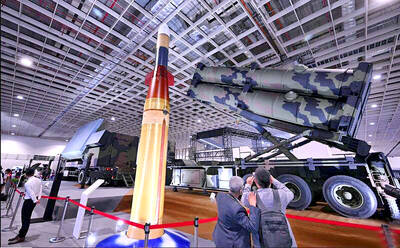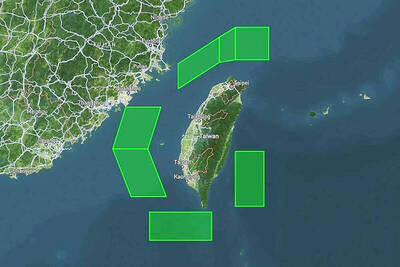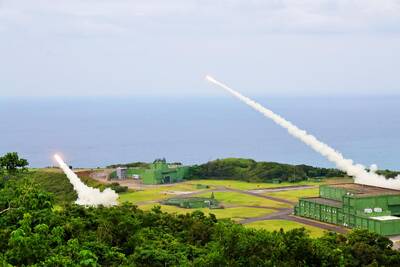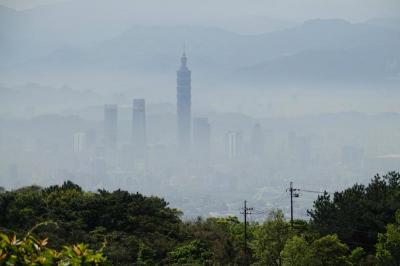Taiwan is considering visa entry privileges for tourists from eight ASEAN members, in line with the government’s “New Southbound Policy,” the Ministry of Foreign Affairs said.
In a report submitted to several legislative committees, the ministry said it has been working to promote the government’s new policy, which was outlined by President Tsai Ing-wen (蔡英文) during last year’s presidential election campaign.
Visitors from Brunei, Cambodia, Indonesia, Laos, Myanmar, the Philippines, Thailand and Vietnam would be granted entry privileges such as visa waivers, landing visas or e-visas, according to the report.
Visitors from two other ASEAN member nations, Malaysia and Singapore, already enjoy visa exemptions for stays of up to 30 days in Taiwan.
As the “New Southbound Policy” aims to achieve an economic transformation for Taiwan and push for a greater role for the nation in foreign affairs and global issues, Southeast Asia forms a key segment that Taiwan must seize as part of its efforts to expand its domestic market with a “people-focused” strategy, the report said.
To achieve this goal, Taiwan is emphasizing joining regional economic integration and attracting tourists from Southeast Asia and South Asia, it said.
Taiwan had a “Go South” push in the 1990s under then-president Lee Teng-hui (李登輝), but it did not succeed because China was opening up at the time and the region was hit by the 1997 financial crisis.
With the Democratic Progressive Party’s win in both the presidential and legislative elections in January, the number of Chinese tourists visiting Taiwan has fallen in recent months.
To compensate for the loss in tourism dollars from Chinese visitors, the government is keen to attract tourists from Southeast Asia, South Asia and East Asia, without compromising national security and public order, the ministry said.

Taiwan is to commence mass production of the Tien Kung (天弓, “Sky Bow”) III, IV and V missiles by the second quarter of this year if the legislature approves the government’s NT$1.25 trillion (US$39.78 billion) special defense budget, an official said yesterday. Commenting on condition of anonymity, a defense official with knowledge of the matter said that the advanced systems are expected to provide crucial capabilities against ballistic and cruise missiles for the proposed “T-Dome,” an advanced, multi-layered air defense network. The Tien Kung III is an air defense missile with a maximum interception altitude of 35km. The Tien Kung IV and V

The disruption of 941 flights in and out of Taiwan due to China’s large-scale military exercises was no accident, but rather the result of a “quasi-blockade” used to simulate creating the air and sea routes needed for an amphibious landing, a military expert said. The disruptions occurred on Tuesday and lasted about 10 hours as China conducted live-fire drills in the Taiwan Strait. The Civil Aviation Administration (CAA) said the exercises affected 857 international flights and 84 domestic flights, affecting more than 100,000 travelers. Su Tzu-yun (蘇紫雲), a research fellow at the government-sponsored Institute for National Defense and Security Research, said the air

Taiwan lacks effective and cost-efficient armaments to intercept rockets, making the planned “T-Dome” interception system necessary, two experts said on Tuesday. The concerns were raised after China’s military fired two waves of rockets during live-fire drills around Taiwan on Tuesday, part of two-day exercises code-named “Justice Mission 2025.” The first wave involved 17 rockets launched at 9am from Pingtan in China’s Fujian Province, according to Lieutenant General Hsieh Jih-sheng (謝日升) of the Office of the Deputy Chief of the General Staff for Intelligence at the Ministry of National Defense. Those rockets landed 70 nautical miles (129.6km) northeast of Keelung without flying over Taiwan,

A strong continental cold air mass is to bring pollutants to Taiwan from tomorrow, the Ministry of Environment said today, as it issued an “orange” air quality alert for most of the country. All of Taiwan except for Hualien and Taitung counties is to be under an “orange” air quality alert tomorrow, indicating air quality that is unhealthy for sensitive groups. In China, areas from Shandong to Shanghai have been enveloped in haze since Saturday, the ministry said in a news release. Yesterday, hourly concentrations of PM2.5 in these areas ranged from 65 to 160 micrograms per cubic meter (mg/m³), and pollutants were